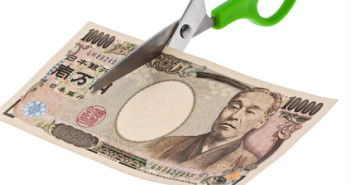The Philadelphia Fed Manufacturing Index is an important leading indicator, and is based on a survey of manufacturers in the Philadelphia area. It examines manufacturers’ opinions of business activity, and helps provides a snapshot of the business climate and sentiment in the U.S. An actual reading which exceeds the forecast is bullish for the dollar.
Here are all the details, and 5 possible outcomes for USD/JPY.
Published on Thursday at 15:00 GMT.
Indicator Background
The Philadelphia Fed Manufacturing Index measures regional manufacturing growth. The manufacturing sector is a vital component of the economy and the index provides a useful reading for determining whether the economy is in a growth or contraction phase.
The index shows a lot of volatility, which means that the market prediction is often way off the actual reading. The January reading dropped to 7.3, well below the market forecast of 10.7. The forecast for February calls for an increase to 9.0. Will the index rebound with a strong reading this month?
Sentiments and levels
USD/JPY has now broken above the 78 level, and there is room for further upside movement. The Japanese economy continues to struggle, while across the Pacific, the US economy is picking up steam. So, the overall sentiment is bullish on USD/JPY towards this release.
Technical levels, from top to bottom: 80.25, 80, 79.50, 78.30, 77.50, 77 and 76.60.
5 Scenarios
- Within expectations: 5.0 to 13.0: In such a case, the yen is likely to rise within range, with a small chance of breaking higher.
- Above expectations: 13.1 to 17.0: An unexpected higher reading can send USD/JPY above one resistance level.
- Well above expectations: Above 17.0: The chances of such a scenario are very low. A second resistance line might be broken on such an outcome.
- Below expectations: 1.0 to 4.9: A lower reading than forecast would push USD/JPY downwards, and one support level could be broken.
- Well below expectations: Below 1.0: A reading close to zero or in negative territory would signal worsening conditions in the manufacturing sector. In this scenario, the pair could break two or more support levels.
For more on the yen, see the USD/JPY.
